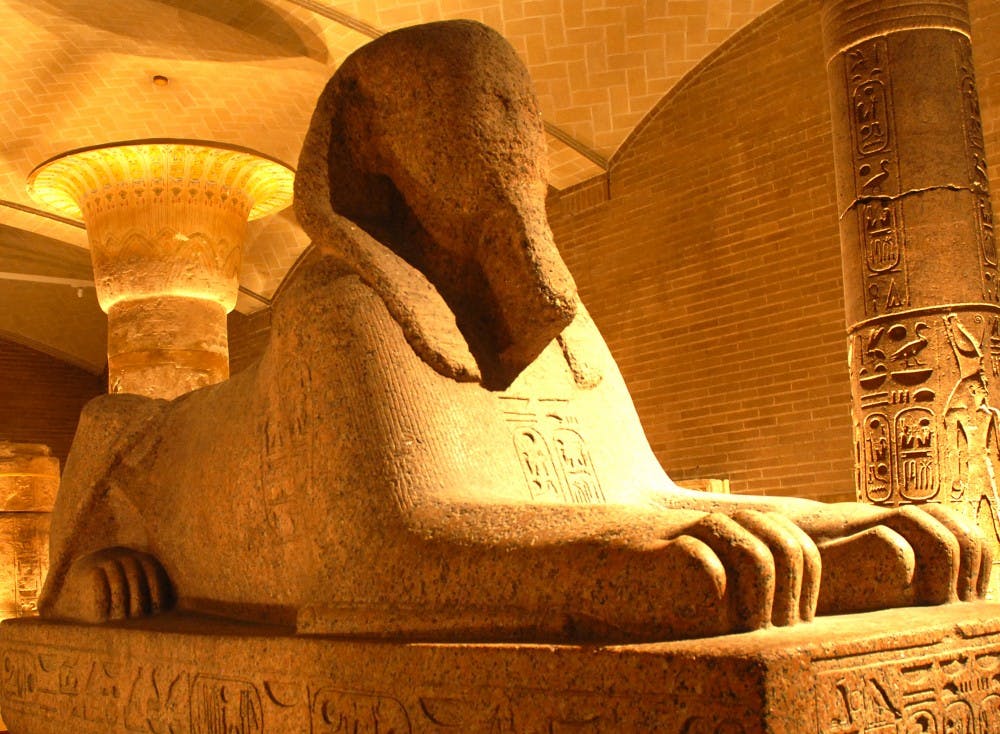A Burmese crystal ball, a cat mummy and an Etruscan helmet are among some of the objects that visitors to the University of Pennsylvania Museum of Archaeology and Anthropology could one day call their own.
Since 2009, the Penn Museum has offered an “Adopt an Artifact” program, through which members of the Penn community and visitors in general can pay $35 to adopt an object from ancient times.
Groups and individuals who adopt artifacts will receive a photograph of the object, as well as a certificate of adoption.
The artifact adoption fees are put toward the maintenance and upkeep of the object, as well as the museum’s conservation efforts, according to Penn Museum Administrative Coordinator Beatrice Jarocha-Ernst.
Jarocha-Ernst described the program as “very popular” among schoolchildren and summer reading programs.
Richard Hodges Williams, director of the Penn Museum, described the initiative as an “excellent way to profile some of our objects.”
“It helps our members remember us, while also raising funds and donations,” he said.
Hodges said that for a museum of Penn’s size with more than one million artifacts that require maintenance, funding is an obvious issue.
Related
Penn Museum launches online collections database for 125th anniversary
‘DP’ reporter explores the secrets of Penn Museum
Director of Museum to leave in 2012
“I think every museum will tell you it faces a lack of conservation resources,” he said. “Quite honestly, this is a way to reach out to our audiences, while raising funds, so it is a win-win situation.”
Objects that are available for adoption are easily identifiable by the “Adopt-me” sign that is displayed alongside them, according to Amanda Mitchell-Boyask, Penn Museum’s director of development.
Though Jarocha-Ernst said the exact number of artifacts that are up for adoption is still “in review,” there are 11 objects listed under the program on the museum’s website.
Some other items that visitors can adopt include a bronze rooster from the kingdom of Benin, a stone carving of horses from the Tang Dynasty in China and the museum’s famous 12-ton, red granite Sphinx of Ramesses II.
“The sphinx is definitely one of our more popular objects,” Jarocha-Ernst said. “The popularity of the program is hard to estimate, but some objects have been adopted once or twice, while others have been adopted 15 to 20 times.”
One such “adopter” is New Jersey resident Nancy Donohue, who has adopted two artifacts since the program began. When Donohue was a young child, her mother worked at the museum.
“‘Ram in the Thicket’ has been my favorite object in the museum since I was in college,” Donohue said. “I was disappointed to find out it wasn’t on the list when I heard about the program.”
Upon learning the Ram in the Thicket — a statue that portrays a goat standing upright against a flowering plant — was not available for adoption, Donohue worked with the museum to add the object to the list of available items.
Donohue, who called the program a “clever bit of marketing,” said she was glad she could adopt an artifact with which she always had a special bond.
“We know intellectually how these objects link us to our past,” she said. “This initiative gives us more of a physical, almost tangible, link to our past.”



